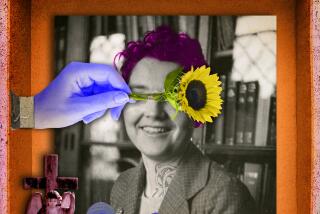How Haruki Murakami and other writers are grappling with our surreal post-pandemic reality

Since 1979, Haruki Murakami has written more than a dozen imaginative novels concerned with the nature of reality. He says he tends to incorporate weird events that occur as he writes into otherwise realistic stories. The filmmaker Arthur Jafa has described a similar process of creating energy by placing dissonant scenes in proximity. In a Murakami novel, this might look like a character stuck in Tokyo traffic in one moment and arriving in a parallel universe with two moons in the next.
But the reality of 2024 feels different from that of 2018, when we last got a book from Murakami. Since then, we’ve faced a deadly pandemic, historic social protests, the growing devastation of climate change, a resurgence of reactionary politics and outbreaks of war. It is in this real-life dystopia that Murakami’s latest novel arrives.
“The City and Its Uncertain Walls” bears the author’s hallmarks. There’s a love story and references to jazz, the Beatles and cats. There’s a young person (called Yellow Submarine Boy) who is both intellectually gifted and socially divergent. Murakami develops odd details in the compelling fashion we’ve come to expect.
But does his latest novel speak to the current moment? Is it, as the publisher suggests, “a parable of these strange post-pandemic times”?
Murakami is from Kyoto, an ancient Japanese capital with historic cultural institutions. In July 1945, the U.S. removed Kyoto from its list of targets for atomic destruction. Instead of bombing Kyoto the next month, we destroyed Nagasaki. Murakami was born four years after that holocaust.
When he was 2, his family moved to the port city of Kobe. He has said its proximity to water and the diverse immigrant populations that traveled through it shaped his writing. Other likely influences include his father, who was a literature professor, and his experience coming of age in the 1960s, a time of revolutionary imagination.
When Murakami sat down to expand “The City and Its Uncertain Walls,” first published as a novella in 1980, he was 71 and the world was on the brink of the COVID-19 pandemic.
“I started writing this novel in March 2020,” Murakami tells us in the book’s afterword, “just as the coronavirus began its rampage across Japan, and finished it nearly three years later.” He adds that he rarely left home during this time, writing every day.
The context of the pandemic is especially present at the novel’s end. The beginning, though, is for hardcore Murakami fans.
That’s when Dream Reader, the narrator, falls in love with a girl whose memory will haunt him throughout his life. She tells him about a city where she says her real self lives. Enclosed by a high wall, it has a river, a gatekeeper, magical beasts and a library stocked with egg-shaped dreams that a reader must decipher.
Soon after the girl tells the narrator about this city, she disappears. Unable to find her, he grows despondent. He floats through his youth uninspired, falling into a routine of repetitive, boring work. Years later, a ghost named Mr. Koyasu tells him, “Once you’ve tasted pure, unadulterated love, it’s like part of your heart’s been irradiated, burned out in a sense.”
Anna Moschovakis’ ‘An Earthquake Is a Shaking of the Surface of the Earth” takes on a world defined by disruption, dislocation and uncertainty at every turn.
Heartbreak leads the narrator into the walled city. After he arrives, a gatekeeper wounds his eyes, separates him from his shadow and assigns him to be the library’s Dream Reader.
Over the course of the novel, which spans three decades, the narrator travels between the imagined city and the real world, searching for human connection that’s always beyond his reach. The details of the two worlds blur together. So does time. Both places have libraries with subterranean rooms and wood-burning stoves. And the people in both places struggle to know themselves because of the emotional walls they build.
For a wealthy quartet of friends under colonial rule in 1928, ‘privilege’ is not equally shared.
But the worlds also differ from each other. The real world suffers from accidental cruelty such as the death of Mr. Koyasu’s young son. The walled city, however, is organized around cruelty such as the routine mistreatment and killing of beasts. People who enter that city are violently separated from their consciousness and memories, which they refer to as their shadows.
No matter where Dream Reader travels, people struggle to find love and happiness.
Transience is a motif of other recent post-pandemic works. Like Murakami, their authors blur times, places, realism and surrealism to explore characters’ journeys to self-understanding.
In Sejal Shah’s collection “How to Make Your Mother Cry,” the characters seek their autonomous female selves free from patriarchy. Imagination and fairy tales help them survive. Like Murakami, Shah plays with spatial context, writing in one story that a “train station became a chiropractor’s office (Everything was once something else —).”
In Mary Slechta’s “Mulberry Street Stories,” a neighborhood juxtaposes fantastic features, such as a house that walks, with ordinary cruelties, such as white flight and urban blight. In one story, Mulberry Street is described as floating in space; “untethered and unbalanced, the upper block held its tenuous position by tending to tilt downward.” Big Wheels and children running from pit bulls tumble over its edge, the young residents lost to time while others are able to “leap the chasm” with “hearts in their throats.”
And in Jody Hobbs Hesler’s “What Makes You Think You’re Supposed to Feel Better,” people carve out mental spaces to survive tragedy and discontent. In one story, “Alone,” a married mother yearns to understand her neighbor’s suicide as well as his life of solitude. After his death, she goes into his house and watches through his window as her young family searches for her. Later that night, in the bed she shares with her husband and children, she imagines being inside the neighbor’s house — her portal to escape her own domestic situation.
As we stare down social and ecological disasters, we need new ways to talk about what is real. Murakami writes most transparently about our contemporary moment toward the end of his latest novel in a reflection on the “pandemic of the soul.” Yellow Submarine Boy tells Dream Reader to “believe in the existence of your other self.”
“Your heart is … a bird,” he says. “The wall can’t prevent your heart from flapping its wings.”
But Murakami never shows us how this belief in self changes the material conditions of either town. We are left to imagine what’s next.
Jafa, the filmmaker, has said artists have no responsibility to convince or explain. Better to think of Murakami and the other writers as alchemists who work with the substance of our current reality. What we do with the gold they conjure is up to us.
Renee Simms is an associate professor of African American studies at the University of Puget Sound and the author of “Meet Behind Mars.”
More to Read
A cure for the common opinion
Get thought-provoking perspectives with our weekly newsletter.
You may occasionally receive promotional content from the Los Angeles Times.












